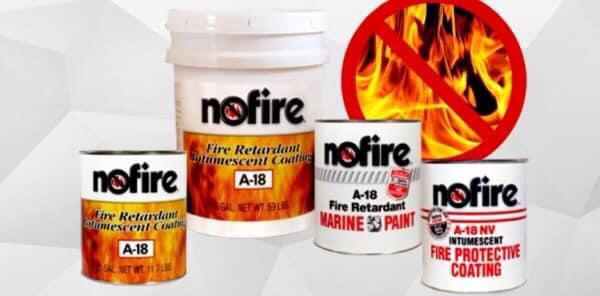NoFire Paints Ghana is one of the largest stockiest of fire retardant paints. It is perfect for application to steel, aluminum, wood and wood products, and all types of composites, our non-toxic formulations will comply with the most stringent requirements for flame spread, smoke production, toxic emissions and heat release – even at extreme temperatures in excess of 982° C.
NoFire paint belongs to a class known as Intumescent. Simply stated, an intumescent paint is one that expands when activated or exposed to heat.
Why Choose NoFire Paints
Fireproof or fire prevention paint provides the following advantages:
- Durable protection: Lasts for decades and makes the surface impact resistant
- Fire protection: Conforms to international standards
- Suitable for various materials: We can provide an appropriate fireproof paint for wood, steel, concrete, plastics, and more
- Prefab is possible: Fireproof paint can be applied before or after construction.
Three Basic ways to Measure Fire Protection
Applications for both land-based and marine fire protection are usually driven by codes. These codes require that a product or system demonstrate compliance with tests which usually measure fire protection in three basic ways:
flame spread
heat transfer
flashover
Flame spread is a surface measurement that determines the speed and distance that a fire can travel along the surface of a material, such as a coating, wood product, or a composite.
Flame spread tests for various applications may differ in sample orientation and in the severity of the heat exposure. The specific tests are prescribed by codes of the authority governing the applications. These tests may also include other factors measure during the exposure, such as smoke developed, heat release rates and toxic products of combustion.
Heat transfer tests determine a system’s protection against a fire, by measuring the temperature rise on the rear surface when the front surface is exposed to a fire. For example, a surface may require 60-minute fire protection according to a specific code or standard. This means that during a fire, the temperature of the rear surface will not rise more than a limited amount for 1 hour. This is an important application for NoFire products.
Flashover is the condition, demonstrated in the Rockland Training Center Video, when a small localized fire suddenly engulfs an entire room or area. Typically, the onset of flashover is accelerated by the ignition of wall surface treatments, such as paint and wallpaper.
Room flashover tests, such as Uniform Building Code (UBC) 8-2, measure the total amount and rate of heat release by a wall and ceiling surface treatment when exposed to a standard heat source. These are reliable determining factors for room flashover.
As evident in the Rockland County video, the extreme heat and smoke generated during flashover will rapidly spread to adjacent rooms in a house. The prevention of flashover is a primary goal of NoFire on land as well as at sea.
In addition to these three categories, there are more specialized tests required for certain applications, such as incombustibility, rate of heat release and ignition temperature. Answers to questions about any tests can be found in the technical manual, or contact NoFire Technologies’ technical department.
NoFire paint applied to the walls and ceiling of a room can effectively eliminate them as contributors to FLASHOVER


